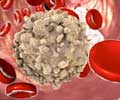
‘African American men are known to be diagnosed with prostate cancer at a younger age and have a higher risk of dying from the disease than other populations. However, only 1 out of 10 prostate cancer cell lines was found to represent African ancestral genetic factors.’
Tweet it Now
In cancer research, cell lines established from patient tumors are used in laboratory experiments as model systems to understand the molecular and cellular basis of cancer, identify therapeutic targets and develop novel treatments. However, the genetic ancestry of these cell lines is often unknown or incomplete. As a result, scientific data may not accurately reflect the diverse populations that exist throughout the world, resulting in less effective patient management and treatments for different populations. The research team performed an extensive set of analyses to improve on this knowledge gap by examining the genetic ancestry of 1,393 cancer cell lines based on known populations. They found that these commonly used cell lines do not represent the diverse ancestry of the human population. The majority, 62.46 percent, of the cell lines were determined to be from European origin, while 29.18 percent were from East Asian origin. All other populations were represented by less than 10 percent of the analyzed cell lines, including 5.26 percent of African origin, 0.86 percent of African American origin and 1.95 percent of Hispanic/Latino origin. Additionally, many ancestral populations were largely absent or underrepresented in cell lines for specific cancer types.
With the information they obtained, the team created an online, interactive web-based tool that allows researchers to determine the genetic ancestry of cell lines. "This information can be used by scientists as a data and visualization tool to show the genetic ancestry of the cell lines they are using for experiments," said Steven Eschrich, PhD, lead author of the article and senior member of the Biostatistics and Bioinformatics Department at Moffitt. "We believe that this new tool, representing diverse ancestries, will be an important resource to reduce the knowledge gaps that exist about disease prevention and treatment among diverse ancestral populations."
"We expect this resource to allow researchers access to ancestry in cell line models and to contribute to efforts to address the underrepresentation in cancer types with clear disparities. Incorporating estimated genetic ancestry within cell line molecular biology and drug discovery studies can significantly improve the rigor, reproducibility and relevance of cancer research activities, not just those explicitly examining the role of genetic ancestry in cancer biology," said Julie Dutil, Ph.D., professor at Ponce Health Sciences University.
Advertisement










